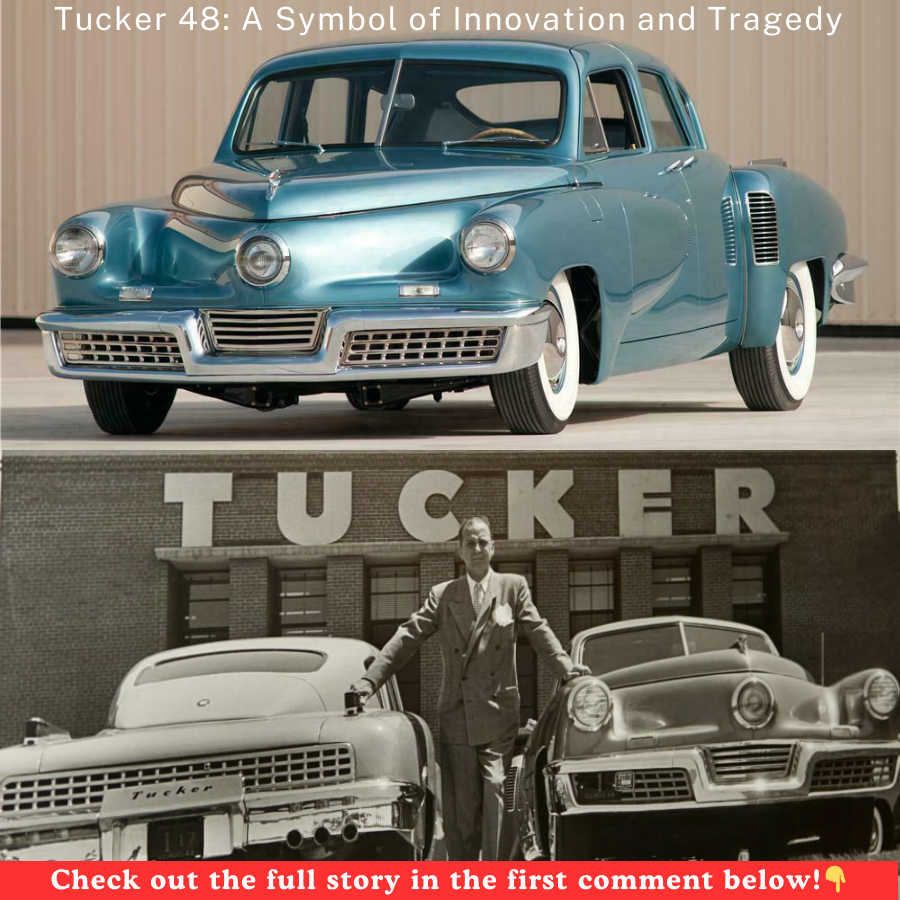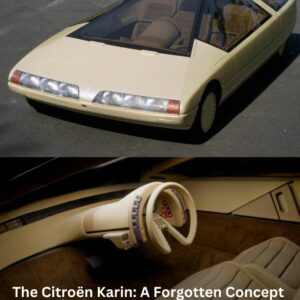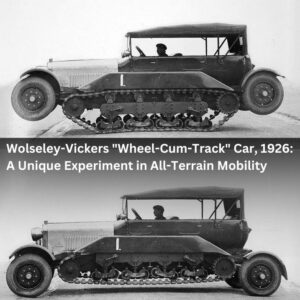The Birth of an Icon
In 1947, as the world emerged from World War II, the American automotive industry was still recovering from years of wartime production. Most major manufacturers relied on outdated designs, with minimal innovation. In this landscape, Preston Tucker, a bold visionary, set out to create something extraordinary: a car that was not only stylish but also safe and technologically advanced, far ahead of its time.


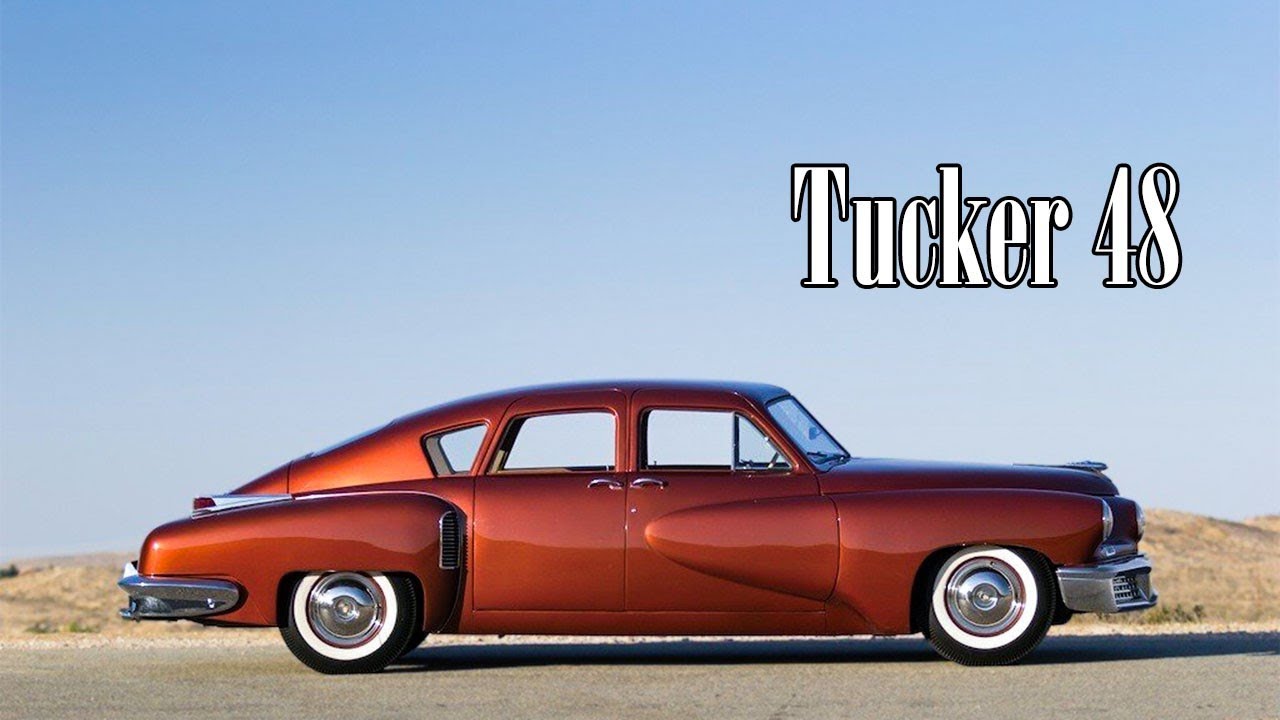
Tucker’s creation, the Tucker 48, wasn’t just a car. It was a statement of innovation and a testament to the pioneering spirit. However, the journey of the Tucker 48 was fraught with corporate opposition, political pressures, and eventual collapse.
Preston Tucker: The Visionary
Born in Michigan in 1903, Preston Tucker was a man with an insatiable drive for innovation. He wasn’t just an engineer but a visionary entrepreneur who sought to revolutionize the automotive industry. Before founding Tucker Corporation, Tucker gained experience through various automotive projects, including designing race cars and military vehicles.
Dissatisfied with the lack of safety and efficiency in existing cars, Tucker envisioned a vehicle that combined cutting-edge technology with user-focused design. His car would be powerful, safe, and
practical—a true leap forward in automotive engineering.
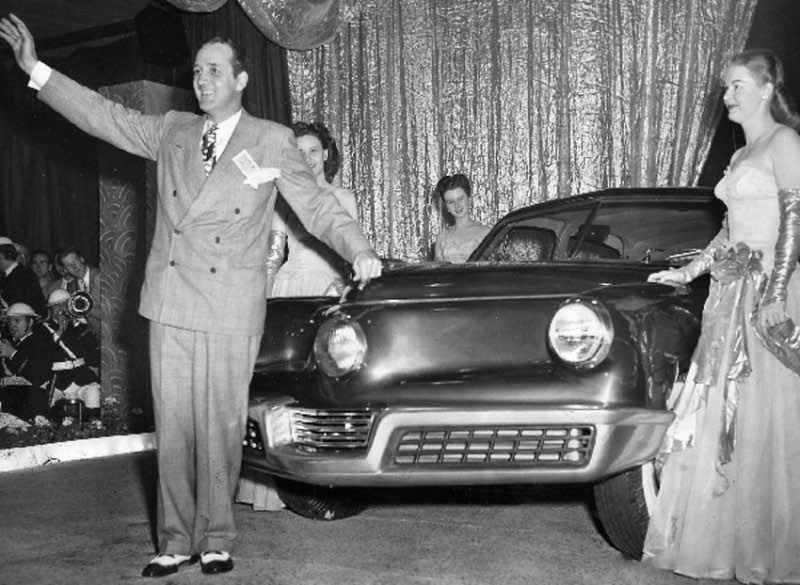
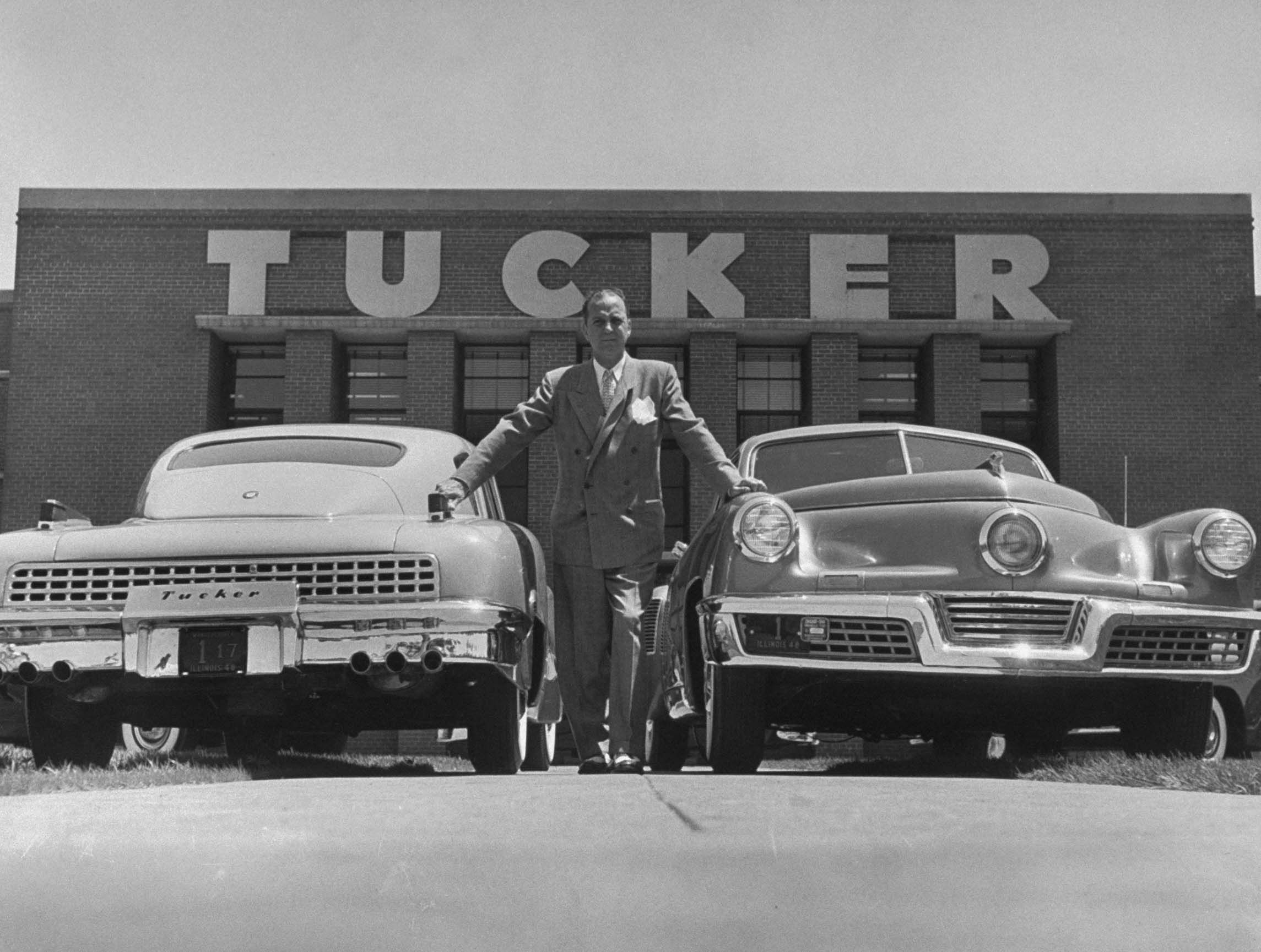
Development of the Tucker 48
Following the conclusion of World War II, consumers eagerly anticipated innovative car designs to match the optimism of a new era. However, the major Detroit automakers—Ford, General Motors, and Chrysler—had not released new models since 1941, as their production lines had been repurposed for wartime manufacturing. This lull created an opportunity for smaller, emerging automakers to capture the market with fresh concepts and designs. Among these innovators was Preston Tucker, who approached car design with a revolutionary mindset. While companies like Studebaker led the way with new postwar models adopting the streamlined “ponton” style, Tucker pursued a distinct vision: a safe, modern car loaded with cutting-edge features.
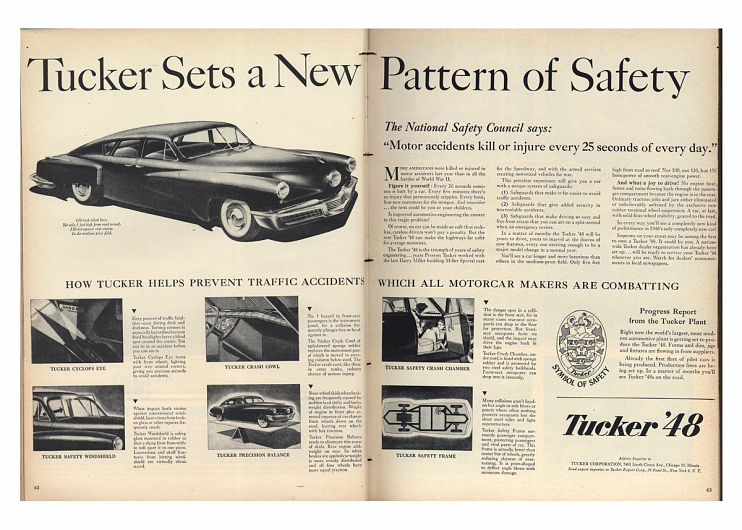
Tucker’s ambitious specifications for the car included a rear-mounted, water-cooled flat-6 engine made of aluminum, four-wheel independent suspension, disc brakes, fuel injection, and advanced safety features like seat belts, a padded dashboard, and all controls positioned conveniently around the steering wheel. This groundbreaking approach demonstrated Tucker’s commitment to prioritizing both innovation and driver safety.
Early Design and Concept
As the war neared its end, Tucker began laying the groundwork for his dream vehicle. In the summer of 1944, he enlisted the expertise of renowned automotive designer George S. Lawson to bring his vision to life. Over the course of nearly two years, Lawson developed a bold, futuristic design that would become the foundation for Tucker’s automobile. By February 1946, Lawson’s design was publicly revealed, and by March 1947, the Tucker Corporation was formally established, with Lawson serving as its first “chief stylist.”
However, creative differences between Lawson and Tucker led to the designer’s resignation in December 1946. Shortly after, Tucker hired Alex Tremulis, a stylist from the Chicago-based design firm Tammen & Denison. Tremulis built upon Lawson’s initial concepts, adding his own artistic touch to refine the design. Tucker provided Tremulis with a three-month contract, during which time the designer produced renderings and mockups for advertising campaigns. These designs gained national attention, thanks to full-page advertisements in major newspapers. However, when the contract ended in March 1947, it was not renewed.
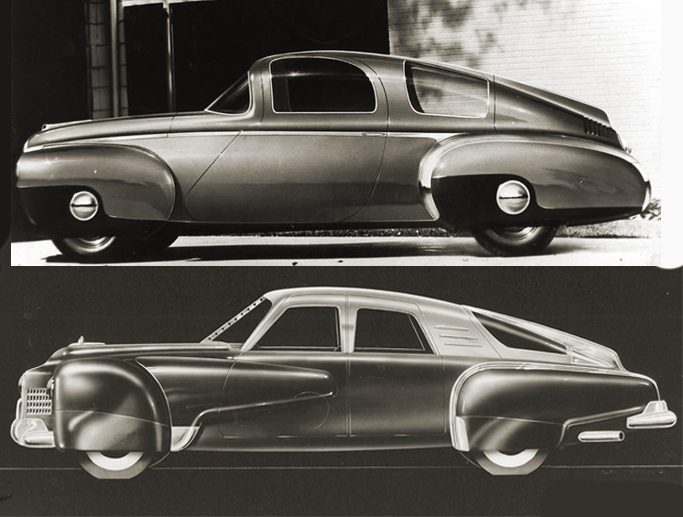
To further enhance the vehicle’s development, Tucker brought on a new team of designers from J. Gordon Lippincott, a prominent New York design firm. This group, which included Read Viemeister, Budd Steinhilber, Tucker Madawick, Hal Bergstrom, and Phillip Egan, was tasked with refining Tremulis’s work. After Tremulis briefly left the project, he was rehired, leading to a unique collaborative effort between two design teams. They worked side by side, each producing full-scale clay models in direct competition.
Photographs from the time show the evolution of the design, with Tremulis’s initial clay model remaining largely unchanged from its earlier advertisements. Ultimately, the Lippincott team’s clay model was selected for production, retaining key elements of Tremulis’s contributions.
Styling, Promises, and Challenges
The Tucker 48’s sleek, modern appearance captivated the public and the press. The company’s promotional materials boasted bold claims, such as “15 years of testing produced the car of the year,” even though a fully functional prototype had not yet been completed. These statements, while effective in generating interest, drew scrutiny from regulators, leading to accusations of fraud.
Despite these challenges, Tucker’s determination to innovate remained unwavering. The vehicle was officially renamed the “Tucker 48,” abandoning its original “Torpedo” moniker, which was considered too evocative of wartime imagery. However, the nickname “Torpedo” persisted informally among enthusiasts. The first prototype was affectionately dubbed the “Tin Goose,” a name reportedly coined by Tremulis himself. While initially seen as a derogatory term, the nickname has since become an endearing part of Tucker’s legacy.
The Innovative Features of Tucker 48
Powerful Engine
The Tucker 48 was powered by a boxer-6 Franklin O-335 engine with a displacement of 5.475 liters, delivering 166 horsepower and 504 Nm of torque. This robust engine was designed
for durability and ease of maintenance, with a unique feature allowing it to be removed in just 30 minutes for servicing.
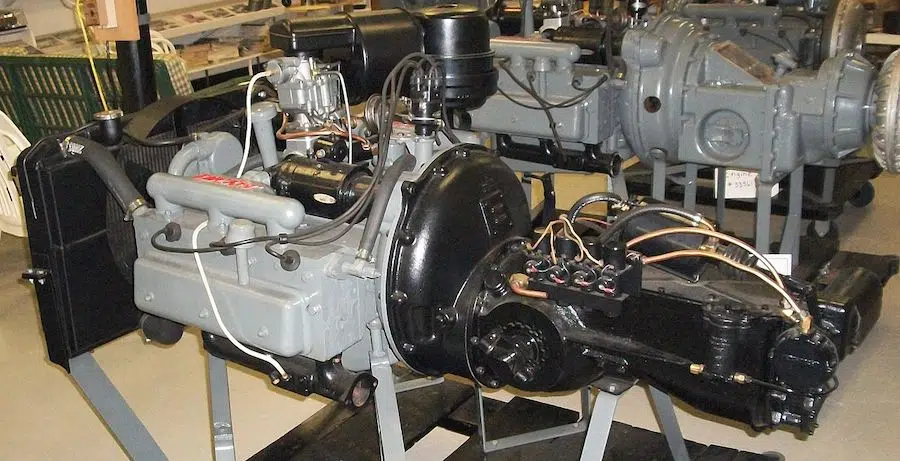
Before finalizing the Franklin engine, Tucker experimented with a revolutionary 589 cubic-inch engine featuring hydraulic valve lifters and direct drive torque converters. However, engineering
challenges led to its abandonment.
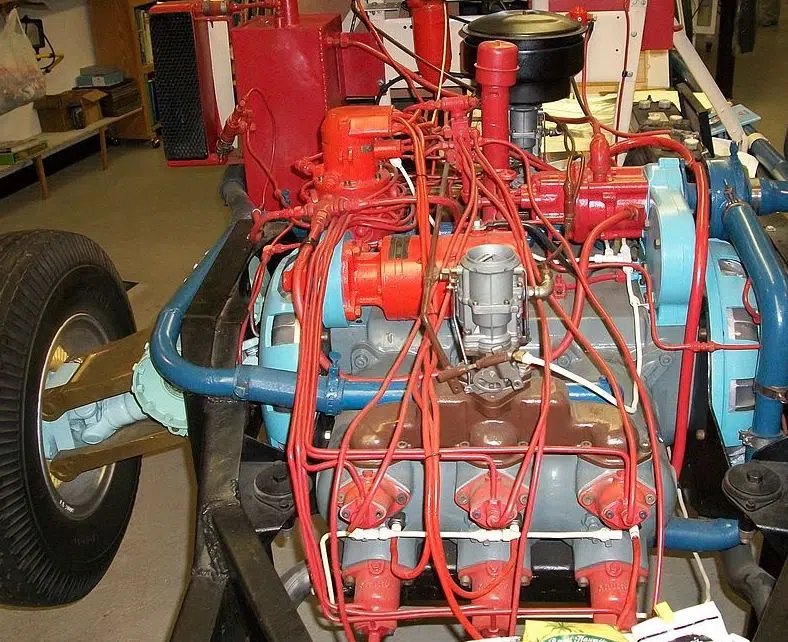
Rotating Headlights
A standout feature of the Tucker 48 was its central rotating headlight, which turned in sync with the steering wheel. This innovative design provided better visibility during cornering, enhancing
driver safety. Unfortunately, laws in several states prohibited cars with more than two headlights, forcing Tucker to include a cover for the center light in those regions.
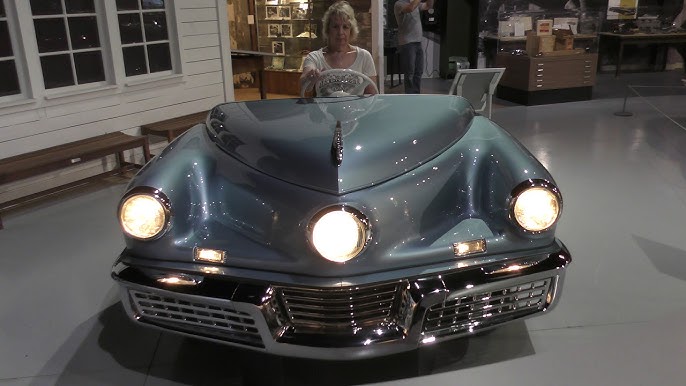
Advanced Safety Features
- Shatterproof windshield designed to pop out during collisions to minimize injuries.
- A reinforced steel perimeter frame for crash protection.
- Cabin safety zone, free from hard protrusions, ensuring passenger safety.
Independent Suspension System
The Tucker 48 featured an innovative rubber-based independent suspension system developed in collaboration with Firestone. While it improved handling, the system faced challenges with stiffness during development, causing issues like wheel lift on uneven roads.
Innovative Design Features
A Tucker 48 Sedan design patent illustration
The Tucker 48 was a trailblazer in both engineering and safety features. While rear-engine, rear-wheel-drive layouts had been used in vehicles like the Tatra and Volkswagen, and headlamps that turned with the front wheels dated back to the 1920s, these would have marked a first for a modern American production car. The standout feature of the Tucker 48 was its third central headlamp, which activated at steering angles exceeding 10 degrees to illuminate corners. However, at the time, 17 states prohibited vehicles with more than two headlamps, leading Tucker to develop a cover for the center lamp for compliance in these regions.
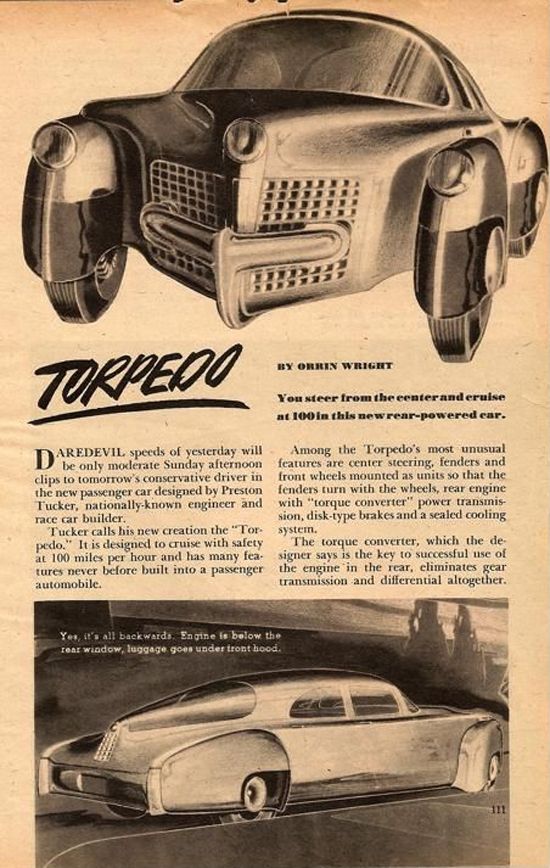
The car’s engineering also included a rear engine and rear-wheel drive. A perimeter frame provided crash protection, complemented by a roll bar integrated into the roof. The steering box was positioned behind the front axle to safeguard the driver in frontal collisions. Safety innovations extended to a padded dashboard, shatterproof glass designed to eject in a collision, and a parking brake with a separate locking key to deter theft. To ease access, the doors extended into the roof. Each Tucker 48 was essentially a prototype, as design and engineering were refined throughout the production cycle. Elements such as interior door releases came from the Lincoln Zephyr, while the steering columns were repurposed from the 1941 Lincoln. Preston Tucker himself patented a collapsible steering column design. Notably, the glove box was relocated to the door panels to make room for the “crash chamber” — a padded, obstruction-free area ahead of the passenger seat intended for safety during accidents.

The engine and transmission were mounted on a subframe secured with only six bolts, allowing the drivetrain to be removed and replaced in minutes. Tucker envisioned this quick-change system enabling loaner engines to be swapped in just 30 minutes for service.
Other innovations like magnesium wheels, disc brakes, fuel injection, self-sealing tubeless tires, and a direct-drive torque converter were explored but ultimately omitted due to cost, engineering challenges, and limited development time.
The Tumultuous Launch
On June 19, 1947, more than 3,000 people gathered at the Tucker plant in Chicago for the grand debut of the Tucker 48. The event was intended to cement Preston Tucker’s legacy and boost public confidence. However, a series of last-minute technical failures cast a shadow over the occasion.
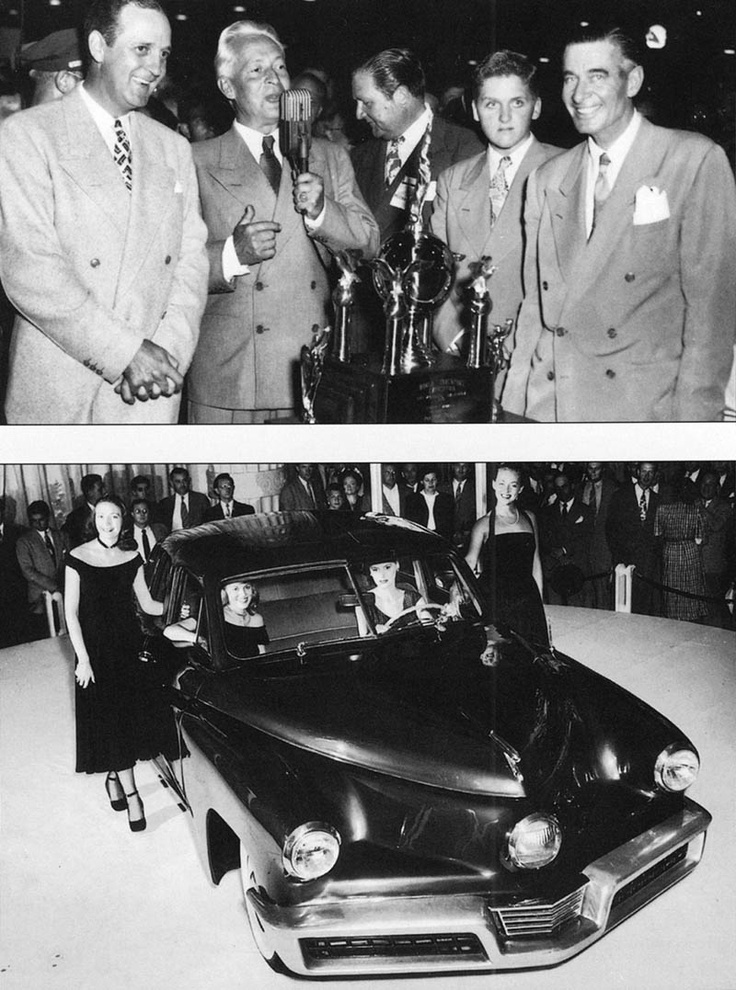
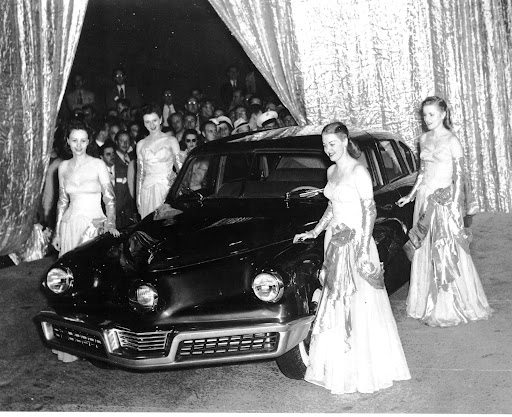
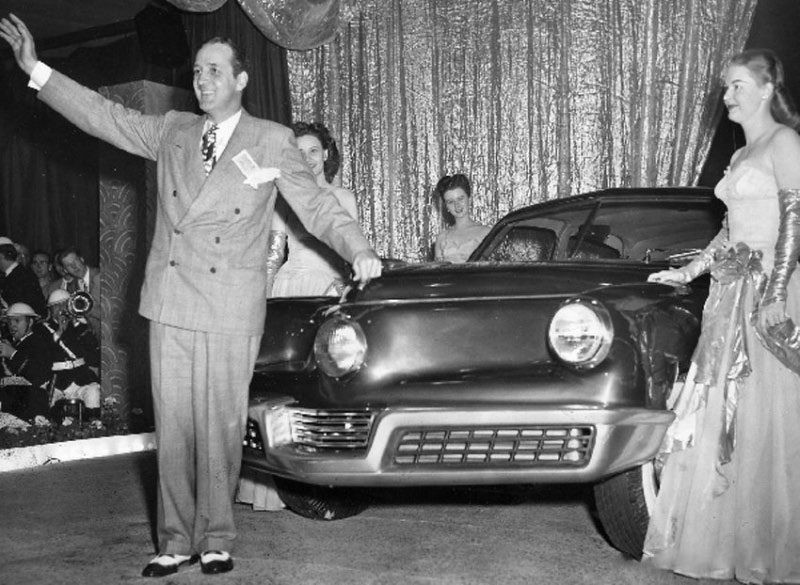
The suspension system of the prototype failed just one day before the event, and the engine suffered from noise and starting issues. Tucker instructed the band to play loudly to mask the engine noise and kept the car running throughout the presentation to avoid public embarrassment.
Legal Battles and Corporate Sabotage
Tucker Corporation raised over $17 million through IPOs and a unique accessories program, allowing customers to pre-order accessories before their cars were built. However, this success made Tucker a target for larger corporations and government scrutiny.
The U.S. Securities and Exchange Commission (SEC) launched an investigation into Tucker Corporation, accusing it of financial fraud. Although the charges were ultimately dismissed, the damage to Tucker’s reputation was irreparable, leading to the company’s closure in 1949 after producing only 51 cars.
The Enduring Legacy of Tucker 48
Today, the Tucker 48 is more than just a car; it’s a symbol of innovation and resilience. The few remaining models are cherished collectibles, often fetching millions of dollars at auctions. Francis
Ford Coppola’s film, Tucker: The Man and His Dream (1988), brought this incredible story to life, ensuring Tucker’s legacy would not be forgotten.
While Preston Tucker’s dream of revolutionizing the automotive industry was cut short, his vision and determination continue to inspire future generations of innovators.
